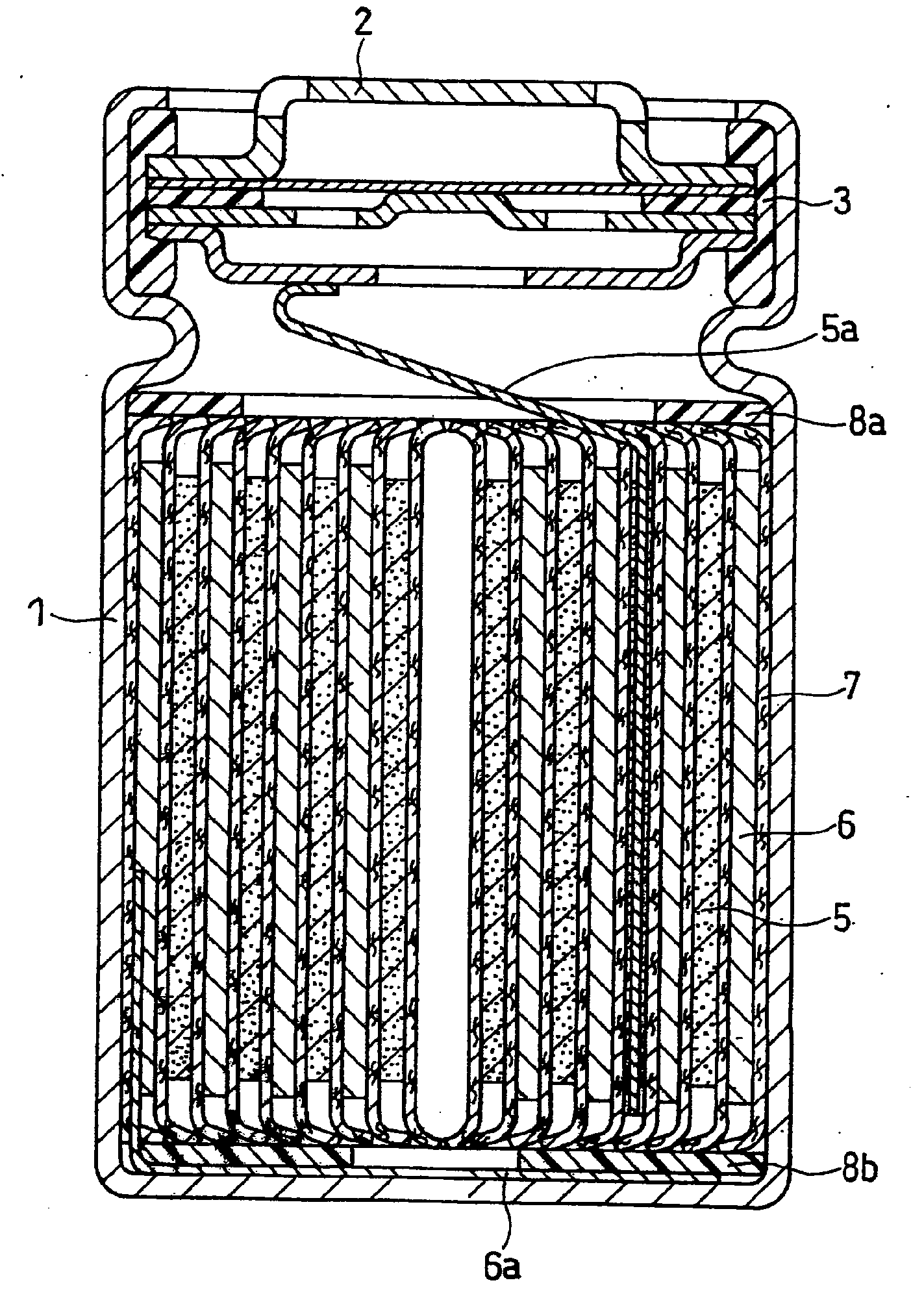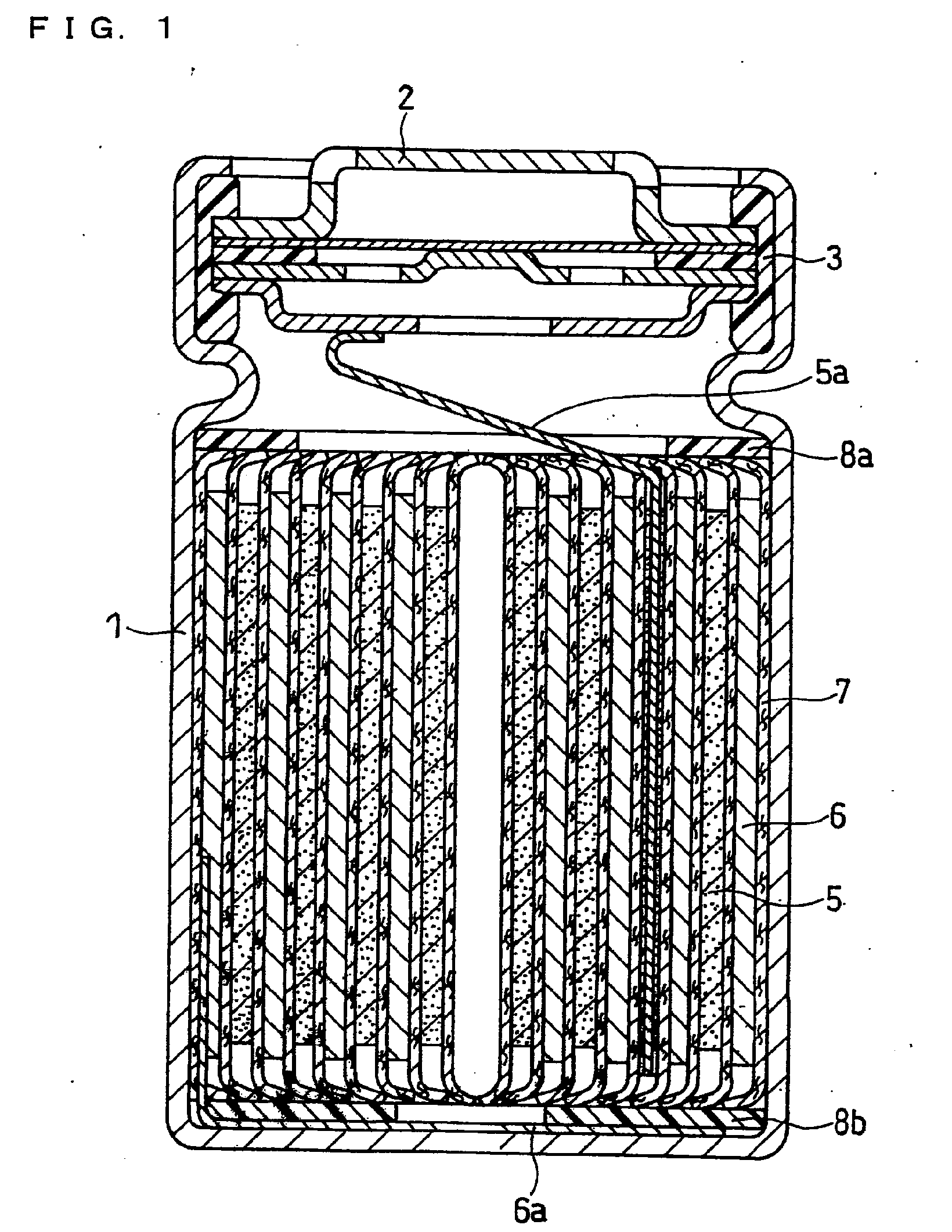Separator and non-aqueous electrolyte secondary battery
a secondary battery and electrolyte technology, applied in the field of non-aqueous electrolyte secondary batteries, can solve the problems of reducing battery performance and prone to crushing of separators, and achieve the effects of favorable cycle performance, high correlation between the dynamic hardness of the separator and the cycle performan
- Summary
- Abstract
- Description
- Claims
- Application Information
AI Technical Summary
Benefits of technology
Problems solved by technology
Method used
Image
Examples
example 1
(a) Fabrication of Positive Electrode
[0072]A positive electrode material mixture paste was prepared by stirring, with a double arm kneader, 3 kg of lithium cobaltate serving as a positive electrode active material, 1 kg of “#1320 (trade name)” available from KUREHA CORPORATION (an NMP solution containing 12 wt % of PVDF) serving as a positive electrode binder, 90 g of acetylene black serving as a conductive agent, and an appropriate amount of NMP. The positive electrode material mixture paste was applied onto both faces of a 15-μm-thick band-shaped positive electrode current collector made of an aluminum foil, except for a connecting portion for a positive electrode lead. The applied positive electrode material mixture paste was dried, and rolled with rollers to form a positive electrode material mixture layer. The density of the active material layer in the positive electrode material mixture layer (weight of active material / volume of material mixture layer) was 3.3 g / cm3. The tota...
example 2
[0103]A PO separator (lot No. 2) was fabricated in the same manner as in Example 1 except that a resin composite obtained by mixing 30 parts by weight of high density polyethylene, 20 parts by weight of low density polyethylene, and 50 parts by weight of dioctyl phthalate was used, and the stretching rate was set to 3.3 times. A cylindrical battery was fabricated in the same manner as in Example 1 except that the separator of lot No. 2 was used, and evaluated in the same manner. The thickness of the separator of lot No. 2 was 23 μm.
example 3
[0104]A PO separator (lot No. 3) was fabricated in the same manner as in Example 1 except that a resin composite obtained by mixing 30 parts by weight of high density polyethylene, 15 parts by weight of low density polyethylene, and 55 parts by weight of dioctyl phthalate was used, and the stretching rate was set to 2.9 times. A cylindrical battery was fabricated in the same manner as in Example 1 except that the separator of lot No. 3 was used, and evaluated in the same manner. The thickness of the separator of lot No. 3 was 24 μm.
PUM
| Property | Measurement | Unit |
|---|---|---|
| porosity | aaaaa | aaaaa |
| porosity | aaaaa | aaaaa |
| pore size | aaaaa | aaaaa |
Abstract
Description
Claims
Application Information
 Login to View More
Login to View More - R&D
- Intellectual Property
- Life Sciences
- Materials
- Tech Scout
- Unparalleled Data Quality
- Higher Quality Content
- 60% Fewer Hallucinations
Browse by: Latest US Patents, China's latest patents, Technical Efficacy Thesaurus, Application Domain, Technology Topic, Popular Technical Reports.
© 2025 PatSnap. All rights reserved.Legal|Privacy policy|Modern Slavery Act Transparency Statement|Sitemap|About US| Contact US: help@patsnap.com


